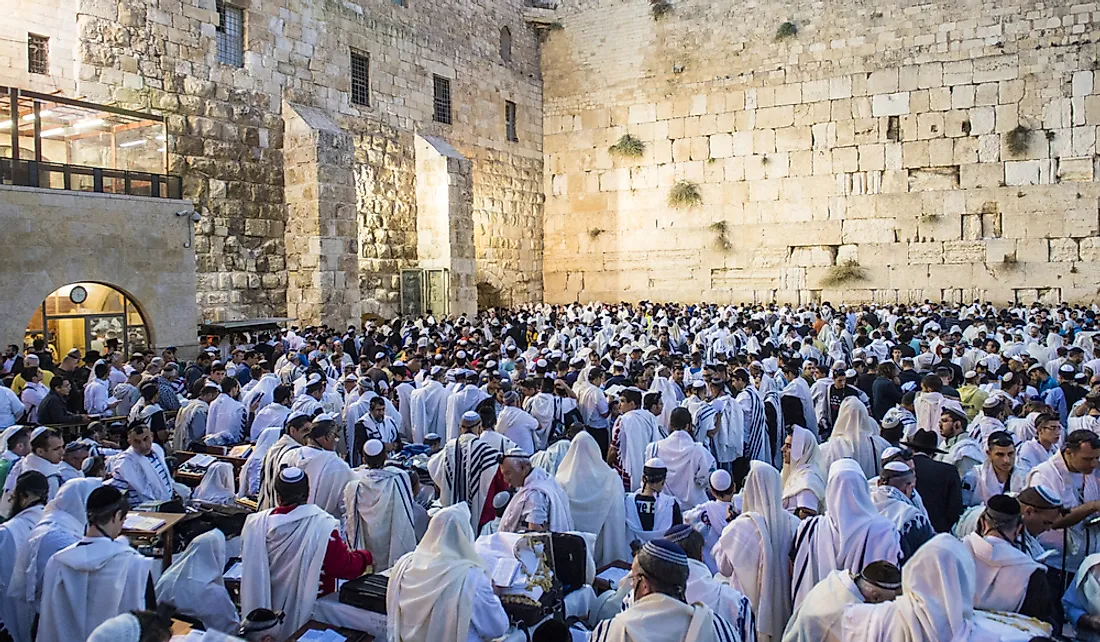Where Will You Find The Wailing Wall?

The Wailing Wall is also popularly referred to as the Western Wall. It is the only remaining part of the second temple in Jerusalem’s Old City. Jerusalem is claimed as the capital city of both Israel and Palestine. Presently, the wall has become a place of pilgrimage and prayer that is sacred to followers of Judaism. According to the ancient Jews, the wall was held as one of the holiest places before the Romans destroyed the city in 70 CE. The Wailing Wall has its history that can be traced back to the 2nd Century BCE, although the upper part of the wall was added much later. At present, the wall outlines part of the larger wall that surrounds the Muslim Al-Aqṣā Mosque and the Dome of the Rock, and therefore, there is a dispute over the control or access to the wall.
Location and Measurements
The Wailing Wall refers to the wall measuring 187 feet, which is the exposed part of the ancient wall found on the western side of the Temple Mount. The part of the wall, which is the Wailing Wall, faces the larger Plaza, and it has been set aside for prayer. The Wailing wall stretches to cover a distance of about 1,600 feet, and a large part of it is hidden behind the residential buildings. The wall is made up of 45 courses of stone with 17 being below the ground and 28 are above the ground. The first seven visible layers were constructed during the Harrodian period, and it is mainly of limestone blocks which are believed to have been queried at Zedekiah's cave or Ramat Shlomo which lies approximately 2.5 miles northwest of the Old City. The stones used are huge with some being estimated to weigh as much as 1.8 tons while others are 7.3 tons, and others weighing even more. The next four courses are small stones, which was constructed in the 8th Century during the Umayyad dynasty or the early Muslim period. Above that, it is about 16 to 17 courses and small stones which were constructed during the Mamluk era between the 13th Century and the 16th Century.
Theology and Ritual of Judaism
According to the Jewish tradition, the Wailing Wall was built on the foundations that were established by the biblical King Solomon during the era of the first temple. Other medieval rabbi teachings claim that the current Wailing Wall forms part of the surviving walls of the temple itself. According to some rabbinic scholars of the 18th century, the temple was destroyed and God removed his presence from the sanctuary and placed it on the Wailing Wall where it remains in its honor and holiness, and it is claimed that the great Jewish sages like Radvaz and Isaac Luria received their divine revelation at the Wailing Wall.
Islamic Belief on the Wailing Wall
According to the Islamic religion, the wall is thought to have been where Muhammad the Prophet tied his winged steed Buraq during his night flight to Jerusalem. Different places have been suggested as the exact place where the Buraq was tethered. For several years the alleged location has been claimed to be at Al-Buraq Mosque that is located inside the Wailing Wall on the southern end of the current Western Wall Plaza.
The Wailing Wall as a Tourist Attraction
The Wailing Wall is one of the largest tourist attractions in Israel. The place is busy throughout the day, and visitors from around the world visit the Wailing Wall to take photographs or to pray. The place is also swearing in grounds for the military in Israel. Some believe that being near the Wailing Wall, one could absorb the spiritual atmosphere that permeates from the revered wall. It is customary for the Jews who pray in the wall to write down their prayer on pieces of paper and place them into the cracks. All men visiting the Wailing Wall are expected to cover their heads because it is a religious site.











